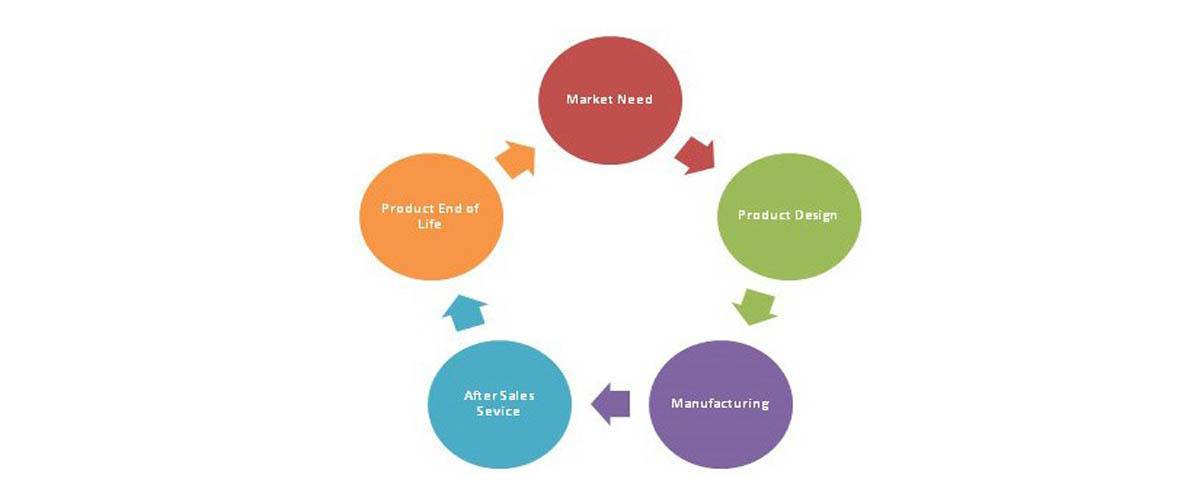See how B2Sell delivers the fastest time-to-value in the marketClick Here
A Glance into Product Information Management
B2Sell, PIM
Posted on April 8, 2020

A Glance into Product Information Management
As online businesses are crowding the online marketplace the need for well-managed websites is a crucial factor for the success of every website. More and more brick-and-mortar businesses are going online to improve their sales and revenue. But this just not only requires a website but also requires the business to incorporate a proper data management system for product lifestyle management.
What does PIM mean?
Product Information Management also commonly known as its abbreviation PIM, is mainly referred to as the process of handling business product data and content regarding prices and quantities, required for the hassle-free sales and marketing of the products.
PIM systems are generally implemented in businesses that handle many products and require to track each phase of the product lifestyle.
Abbreviations can get deceptive, PIM is also known for Personal Information Manager which is application software used typically as a personal organizer for storing basic information, calendar, special dates, alerts, reminders, address book, journal entries, etc. On the other side, there are several synonyms for PIM that is inclined to a specific industry, namely,
- PDM Product Data Management
PDM is incorporated mainly in the engineering industry denoting the product development data and coordination of the manufacturing and distribution details.
- PRM - Product Resource Management
It is a synonym mostly linked with Product Content Management (PCM) and is popularly used in the UK.
- PLM Product Lifestyle Management
PLM is mainly associated with the IT industry with its goal to optimize the lifecycle that the product incurs from idea and design to coding, testing, and launch.
Most enterprises use an ERP (Enterprise Resource Planning) for maintaining the product basic details, prices, stock availability, etc. Online businesses including most of the eCommerce websites employ an ERP system to track their products and invoice details. While the ERP systems can handle a lot of data, it lacks the feature of adding more content elements including textual descriptions, images, tables, and customized content. This is where Product Information Management systems find their importance.

Benefits of PIM
- Improved Product Data Management
As the business keeps growing, there will be new additions to the product lists and even updated versions of the existing products. In such scenarios, it can get difficult to track the products. A PIM system can be used for logistics and inventory purposes to easy up the whole tracking process.
- Save More Time and Money
Who doesnt want to save some time and money simultaneously? Using PIM in your business will automatically import the data available in the existing ERP system of the business which will, in turn, save time as there is no need for re-entering the data manually.
With using PIM, the products shown online can now have more details such as related images, details regarding the model, available stock, dimensions, etc, a detailed description of the product and its brand, etc. This will greatly help in reducing the number of returns and complaints on the product due to the absence of relevant product details online.
- Better Customer Experience
With the detailed description of the product, customers now can get an easier understanding of whether the product is suitable for their needs or not. This will greatly reduce the time and effort for returning and replacing the purchased goodies. The multi-lingual functionality of PIM allows the system to provide details in different languages including printable catalogs and data.
- Easy Integration
PIM systems are designed to easily integrate with any business enterprise system that offers easier and faster installation. PIM is mostly customizable per your business requirements. Being a one-on-one system with many sub-functionalities enabled, PIM is a one-stop solution for your businesss data management needs. From sales to marketing, PIM has a varied are of functions that you can acquire that includes, printing catalogs, SEO, customizable design, etc.

PIM vs. ERP
Many of the manufacturers, distributors and shop owners own an enterprise system mainly an ERP. But as the number of product increase and the demand for more details and better catalogs become a necessity, employing PIM alongside your existing ERP system will be an efficient step to take early in your online business.
PIM, as we have discussed in the former section, is a multi-functional system that provides different results of which a few are:
- Printable catalogs
- A much-detailed catalog with quality images, details on the product including its working, description, brand, dimensions, price, etc.
- The catalogs can be made available in different languages as PIM systems support multi-lingual.
- The system provides catalog automation which also saves time in the long run.
- Online marketing
- PIM provides dedicated windows to optimize product pages with SEO.
- The tool is capable of building websites, product pages, customer and dealer portals and is customizable as per the users requirement and preference.
- Product details
- The product pages can be boosted with extra room for content elements which is constricted which in turn results in improved customer experience.
- Logistics and Inventory
- Compared to the ERP system, the PIM system can be customized to add more fields in tracking the logistics, material/ product stocks, placements, etc.
- The system will also allow you to track the movement of goods from origin to destination.
- PIM also is designed to create a dealer and customer portal which also provides space for providing order tracking functionality for both the dealers and customers.
The list just keeps going on! As you must have concluded on the importance of PIM for eCommerce, it is time to implement one in your online business too.
